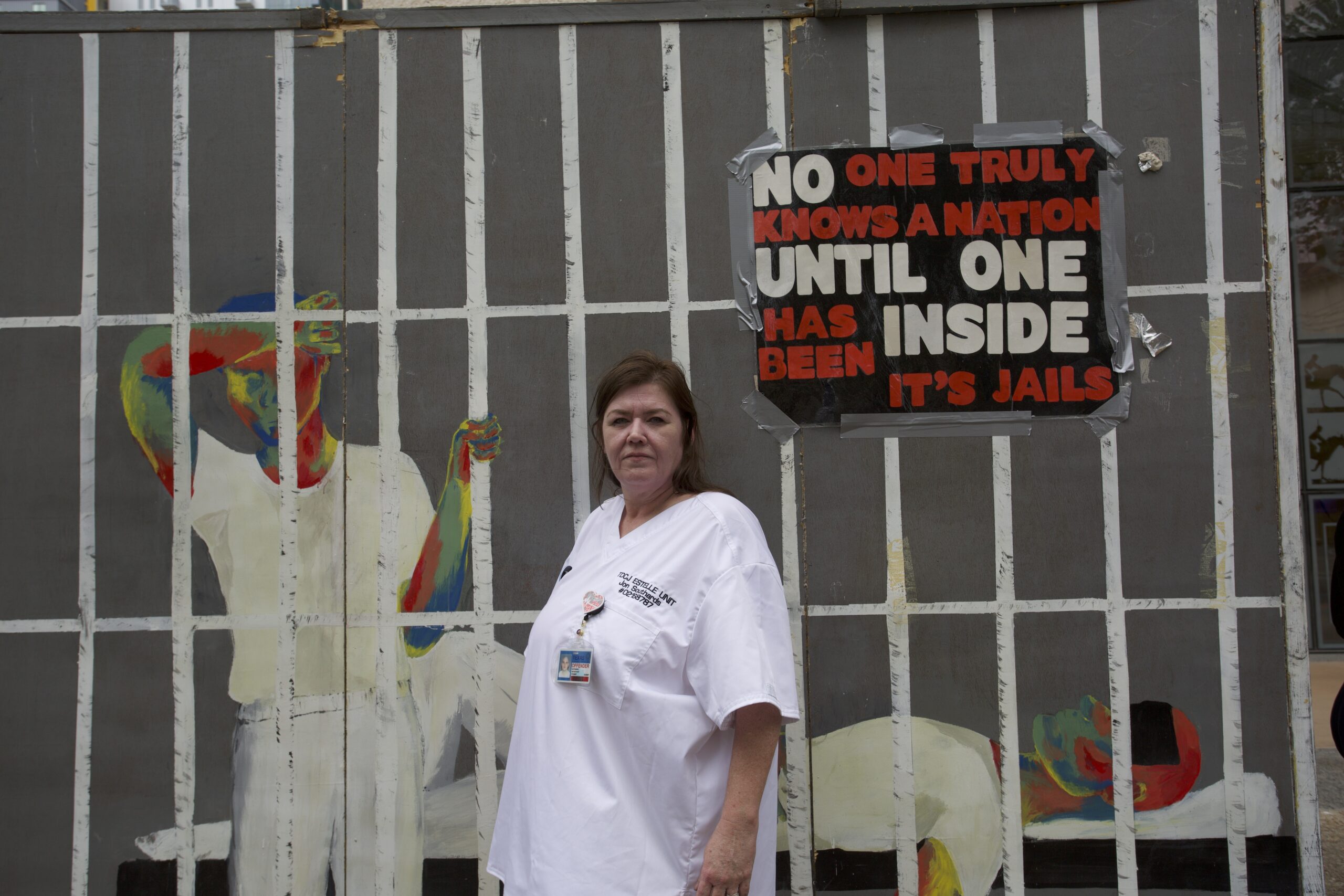Ill-Conceived Crusade
Right-to-life groups are pushing policies that may lead to more abortions.

In their lust to defund Planned Parenthood, Texas right-to-life groups and conservative lawmakers are pushing policies that—in an ironic twist—could lead to more abortions.
Texas funds family planning services through two avenues, and both are under attack this session. If right-to-life groups have their way, thousands of low-income women would lose access to family planning, experts in the field say, leading to more unplanned pregnancies and likely to more abortions.
One major funding stream for family planning is block grants from the federal government. The state spends this money on a wide range of social services, not just family planning, and state lawmakers have broad discretion to decide how the federal money is disbursed. The Texas House recently decided that a lot less of it should fund family planning. In its budget, the House voted to reduce the share of federal block grant money that goes to family planning by two-thirds.
At the same time, the state uses Medicaid money to fund family planning services through the Women’s Health Program. That’s also under assault. Right-to-life groups are fighting to knock Planned Parenthood off the list of groups eligible to receive funds through the Women’s Health Program. This too might limit access to family planning services. That’s because cutting off Planned Parenthood would shift the burden for providing family planning services to community health centers. Critics say these centers —already overburdened and underfunded—may not be equipped to serve the hundreds of thousands of women who need family planning.
Pro-life groups say their goal isn’t to cut family planning, but to ensure Planned Parenthood doesn’t get government money. And they argue that community health centers offer low-income women more “comprehensive primary care.” That may be true, but if community health centers can’t pick up the slack for Planned Parenthood, then the result will be more unplanned pregnancies.
“None of this is based on sound reasoning, it’s just one more tactic to defund Planned Parenthood,” says Fran Hagerty, executive director of the Women’s Health and Family Planning Association of Texas. Pro-life groups “have an agenda and the facts aren’t going to get in the way of that.”
BUDGET CUTS
Bonnie Scurzi is the director of nurses at the Bell County Public Health District in Central Texas, and the family planning budget cuts passed recently in the Texas House make her wince. State representatives approved a slew of budget amendments that gut a combined $61 million from the state’s family planning budget, leaving around $40 million for low-income and uninsured women.
The Bell County Public Health District operates two clinics south of Waco that provide 3,000 women with family planning services. Scurzi says that if the state passes a budget with such deep cuts, she may have to drastically cut back on staff and services.
“This will set us back a decade,” she says. “Those 3,000 women will have to go somewhere else. Some have been coming to us for years, and they may not go anywhere if they can’t come to us.”
Family planning providers statewide—ranging from public-health departments, community health centers, independent clinics and nonprofits—face similar fates, bracing for budget cuts that will inevitably lead to fewer women getting birth control and healthcare screenings. Family planning services are already underutilized in Texas. Almost 300,000 women receive not just birth control and annual gynecological exams but STD tests and cervical cancer, breast cancer and diabetes screenings through state family planning programs. But that’s just 19 percent of the 1.1 million women who need those services.
“For most women between the ages of 18 and 35, that is their healthcare,” said Sarah Wheat, vice president for community affairs of Planned Parenthood in Austin. “So if you cut funding for those programs by two-thirds, that’s hundreds of thousands of women who are likely to lose access.”
WOMEN’S HEALTH PROGRAM
The budget cuts to family planning services are just part of the story.
Pro-life groups are also pushing lawmakers to keep Planned Parenthood clinics and other independent family planning centers from participating in the Women’s Health Program. The program, set to expire this year, uses Medicaid money to provide birth control, healthcare screenings and annual exams to low-income women. The Women’s Health Program not only provides needed service, it saves money in the long run, because it provides contraception to Medicaid-eligible women who Medicaid would have to cover if they got pregnant. In other words, it’s cheaper to provide these women family planning than pay for their unplanned pregnancies.
Several lawmakers have filed bills to extend the program, which has prevented thousands of unplanned pregnancies and saved the state millions. But right-to-life groups won’t support an extension until Planned Parenthood is off the list of eligible providers, arguing that family planning money is a funding stream for abortions. There’s little evidence to support the claim. In fact, current law bars Planned Parenthood centers that perform abortions from receiving government money. But pro-life advocates aren’t convinced.
“We just don’t think they can be trusted,” said Joe Pojman with Texas Alliance for Life. “There are numerous alternate providers who will offer far better healthcare to low income women.”
Pojman and other right-to-life groups would like to funnel family planning money to community health centers, formally called federally qualified health centers. Pojman and others believe that community health centers and public health departments should be the main family planning provider because they offer more all-inclusive healthcare for low-income women. “Providers that do comprehensive primary care to low-income women—those are the types of agencies that our tax dollars should be sent to,” he says.
However, other lawmakers and advocates worry the move will further limit access to birth control. Community health centers “don’t cover the state, not even close,” Hagerty says.
According to the Health and Human Services Commission, 1,647 providers can potentially participate in the Women’s Health Program. But those are just the providers who are eligible, not necessarily how many actually see clients.
It’s not just Planned Parenthood. Right-to-life groups are also trying to defund independent family planning centers not affiliated with Planned Parenthood since they don’t provide all-around primary care. But many of those independent centers are located in rural areas and are sometimes the only family planning provider for the region.
Experts say eliminating any family planning provider is unwise given that too few women already receive the services they need. According to HHSC, 88,491 women received services through the Women’s Health Program in 2009, which is less than 10 percent of the entire eligible population. Only 6 percent of those services were provided at community health centers, while almost 72 percent of the birth control and other services provided that year were at Planned Parenthood and independent family planning centers—the same clinics that might be kicked out of the program.
What would be the effect of closing off clinics that provide nearly three-quarters of the services under the Women’s Health Program? Advocates and lawmakers have asked HHSC to estimate the number of unplanned pregnancies that would result from booting Planned Parenthood and independent clinics off the Women’s Health Program. The agency hasn’t yet finished its analysis. But there’s little doubt that Texas would see a spike in unplanned pregnancies.
Jose Camacho, the executive director of the Texas Association of Community Health Centers, represents the 68 community health centers that run more than 300 clinics statewide. Last year, community health centers saw 923,000 low-income Texans for a wide range of services, including family planning.
Still, Camacho says that should a major provider like Planned Parenthood suddenly be dropped from the Women’s Health Program, community clinics couldn’t possibly absorb those thousands of extra women. “I do not believe that we would have the capacity at the current time to take up family planning if Planned Parenthood, or any provider, were not available,” he said. “A lot of the patients we get are referrals from family planning entities, and while I support women having access to comprehensive primary care, I think it’s problematic to apply that to the Women’s Health Program because it’ll limit access to those screening opportunities.”
Even some right-to-life lawmakers are wary of eliminating providers from the Women’s Health Program. State Sen. Bob Deuell, R-Greenville, is no ally of Planned Parenthood, but even he has reservations about axing so many providers from the Women’s Health Program. “I’m OK with defunding Planned Parenthood, but that’s not my goal,” he said. “My goal is get comprehensive primary and preventative care to women, but the problem is the independent family planning clinics that would close.” Deuell, who said he’s getting a lot of pressure from pro-life groups this session, worries what limiting access will do to the rates of unplanned pregnancies and abortions—“What will happen to those women?” (Deuell has announced an entire Senate Health and Human Service subcommittee to address the issue. Specifically, the panel will hear three bills related to the renewal of the Women’s Health Program.)
If anyone should know that community health centers may not be up to the task, it’s Deuell. In 2005, he passed a budget rider, which took affect in 2006, that sets aside $10 million of the state’s family planning budget each year for community health centers. But they haven’t met the need. According to state data compiled by Hagerty, around 86,000 women have gone without services since the rider was implemented. In fact, community health centers have returned about $15 million to the state since 2006.
The reasons community health centers haven’t used the money are complicated. But essentially the state pays them a lower rate for certain services, so there is no financial incentive for them to use state money. In fact, only 22 of the 68 community health centers in Texas use state money for family planning.
“The money has always been there, they just don’t use it,” Hagerty says. “We already know (community health centers) can’t do it.”
Cutting the number of providers in the Women’s Health Program would be bad enough on its own. But combined with the more than 60 percent cut in the House budget, family planning services in Texas could be awfully hard to access.
Dr. Janet Realini is a former family physician and president of the Healthy Futures of Texas in San Antonio that aims to reduce the number of unintended pregnancies. She says eliminating a Women’s Health Program on top of pending budget cuts “isn’t smart for Texas.” Access will definitely decrease, she says, and inevitably the state will see higher rates of unplanned pregnancies, and likely abortions as well.
“Either one alone would be devastating, both would be devastating times two,” she says. “This is about preventive care, preventing abortions, keeping women healthy and having healthy pregnancies. This is a double whammy.”


